One Pillar Pagoda – The Symbol Of Hanoi
Introduction
Among thousands of famous architectural works of the Hanoi capital, One Pillar Pagoda is an extraordinary work. It is a symbolic work of Hanoi Capital. One Pillar Pagoda is a work that has passed thousands of years along with the capital land and has a special meaning for the people. Let’s explore with Culture Pham Travel information about One Pillar Pagoda – Hanoi’s Buddhist Imprint.
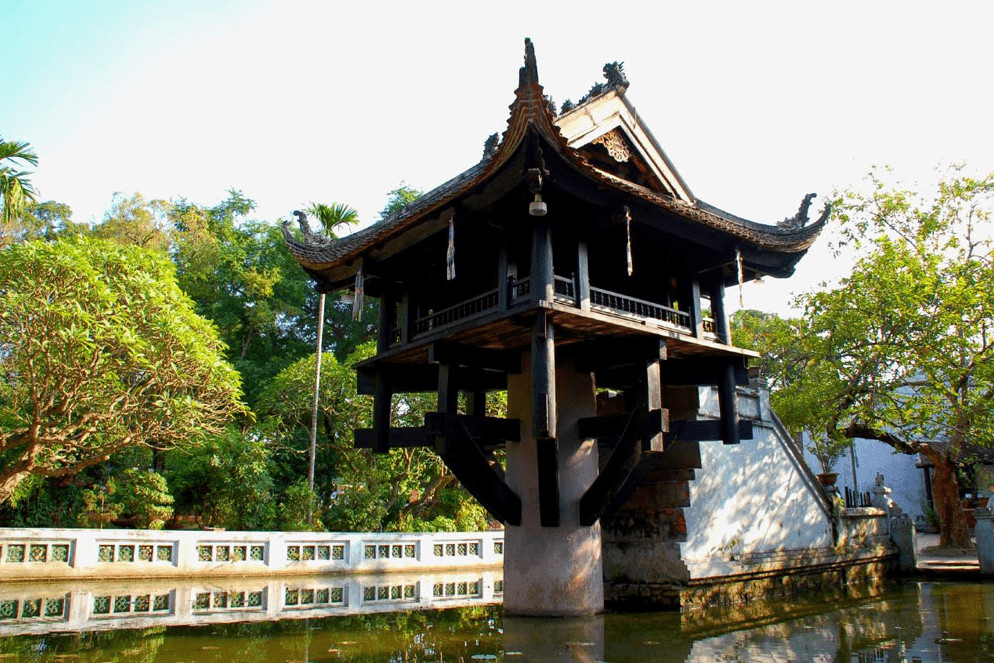
If you are looking for a tour to explore the one-pillar pagoda and other tourist attractions in Hanoi, you can book Ha Noi City Tour 1 Day. Or, if you are traveling by cruise, you can consider Ha Noi Shore Excursions. We will pick you up at Cai Lan Port or Hai Phong Port.
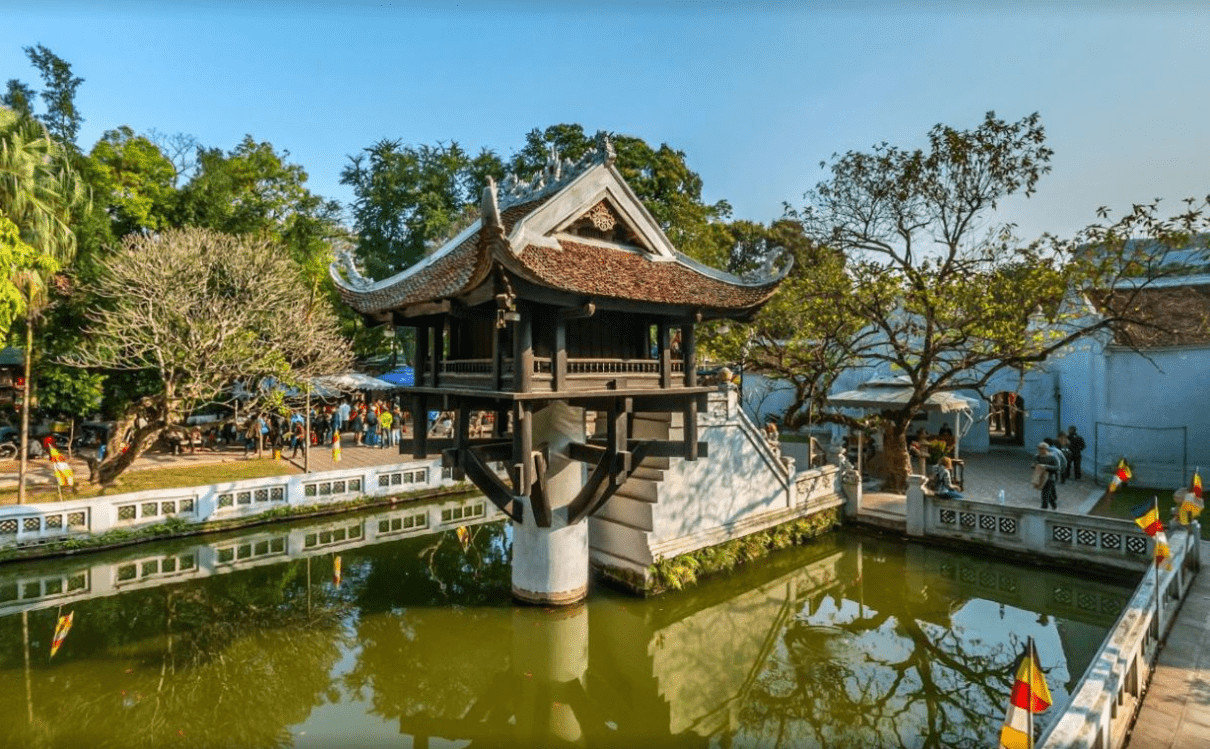
In addition, Hanoi cuisine is also something that you should try every time you come here. You can experience it by booking our Hanoi Street Food Tour. We will take you to experience the most famous dishes of Hanoi and discover the capital’s cuisine and culture. The quintessential cuisine in Hanoi is Banh Mi Hanoi, Bun Cha Hanoi, Pho Bo, and many more.
One Pillar Pagoda’s Names
Many people may have misunderstood that One Pillar Pagoda is a temple built on a pillar. But this is a unitary architecture named exactly “Lien Hoa Dai”. A shrine to worship Avalokitesvara Bodhisattva on a single pillar, located in the Dien Huu Pagoda.
In the past, the Dien Huu Pagoda was massive, with many architectural items. But most of it was no longer exited because of wars and natural disasters. The only thing that remains is Lien Hoa Dai. However, this work still retains the name “One Pillar Pagoda” in the familiar way of folk calling. Today, in addition to “Lien Hoa Dai Nhat Tru“, it has Three Gates, Triple Gems, Monks’ Rooms, and Ancestral Towers in the garden.
One Pillar Pagoda was initially named Lien Hoa Dai, but very few people know and call it by this name. People often call it the name One Pillar Pagoda. This work is part of Dien Huu Pagoda.
What era was the One Pillar Pagoda built?
During the Ly Dynasty, in the winter of 1049, the king built the One Pillar Pagoda. Legend told that King Ly Thai Tong dreamed of Bodhisattva Avalokitesvara sitting on a lotus pedestal. And then, the Buddha invited the king to come with her. When the monk Thien Tue hears the story of King Ly Thai Tong, he advises the king to build a temple, as seen in a dream. He built the temple and named it “Dien Huu“, which means “Long-lasting Happiness“.
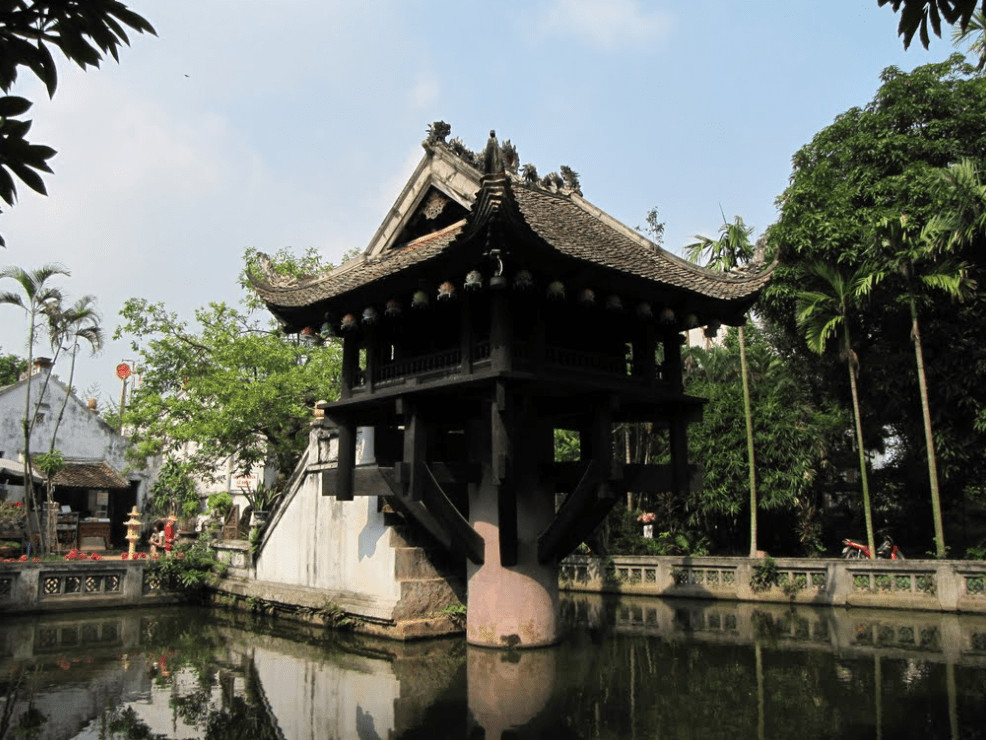
In 1105, King Ly Nhan Tong expanded and renovated the One Pillar Pagoda to make it more beautiful. He builds the Linh Chieu Lake and the Stupa. King Ly Nhan Tong organizes a yearly ceremony on the 8th day of the fourth lunar month. That is to bathe the Buddha and release animals in the presence of the people and monks.

Three years later, Phi Qin Y Lan cast a bell called “Giac the Chung“, meaning “awakening the hearts of the world”.
During the Tran – Le – Nguyen Dynasties, Dien Huu and Lien Hoa Dai Pagodas were severely degraded, so they were rebuilt and repaired many times over the kings. Later, under the destruction of war and natural disasters, Dien Huu Pagoda only had Lien Hoa Dai architecture on stone pillars. Later, people often repaired to preserve the imprint of Thang Long Citadel and called it One Pillar Pagoda.

In 1954, war bombs destroyed One Pillar Pagoda. The Government of the Democratic Republic of Vietnam has restored it based on drawings saved from the Nguyen Dynasty. It took a year to complete it in April 1955. Since then, it has been continuously embellished and preserved. It has been the Vietnamese nation’s cultural-historical architectural heritage.
Where is One Pillar Pagoda located?
Pagoda This pagoda is located in the park area behind Ong Ich Khiem Street, Doi Can Ward, Ba Dinh District, Hanoi. To the right of the pagoda is Ba Dinh Square, a famous place in Hanoi, so you can rely on that to find One Pillar Pagoda.
Hanoi is a big city, so there are many ways for you to move around in the Hanoi area. You can consider many means of transportation such as bus, private car, motorbike, taxi. Culture Pham Travel will help you with a more detailed analysis to quickly decide.
How To Get To One Pillar?
Going to One Pillar Pagoda by Bus
In Hanoi, the bus is a popular, cheap, and continually operating method. But you must pay attention to the travel schedule to catch the right bus. You can refer to some routes that pass through Ba Dinh Square, such as 09, 33, 22, 45, and 50 and get off at stop 18A Le Hong Phong. This is the bus stop closest to the Presidential Mausoleum, so you can quickly move through the One Pillar Pagoda area.
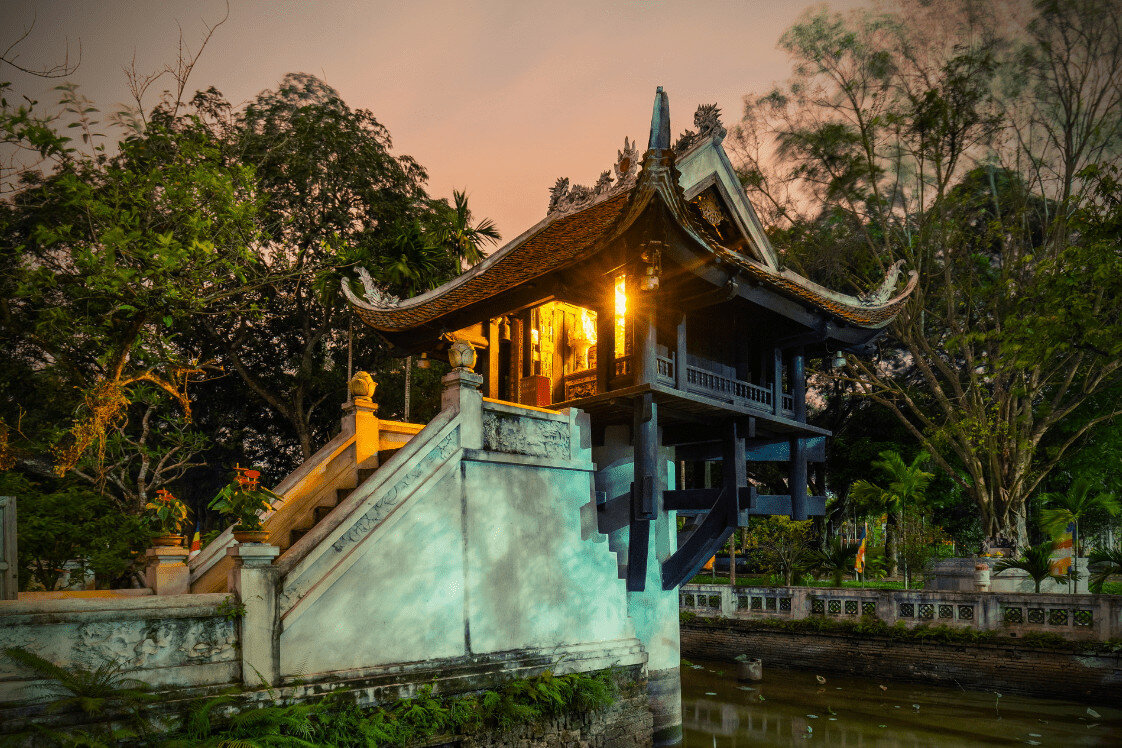
In addition, there is also a newly opened tourist bus route, Hop On Hop Off. This is a double-decker bus. You can choose this vehicle to see Hanoi city from the second floor of the bus. But the fare will be more expensive than the regular bus.

Travel to One Pillar Pagoda By Private Car
Another quite popular means of transport is using a Private Car to move. You can book by choosing our Ha Noi Car Rental. If you choose this method, you will spend more money but get the best service quality.
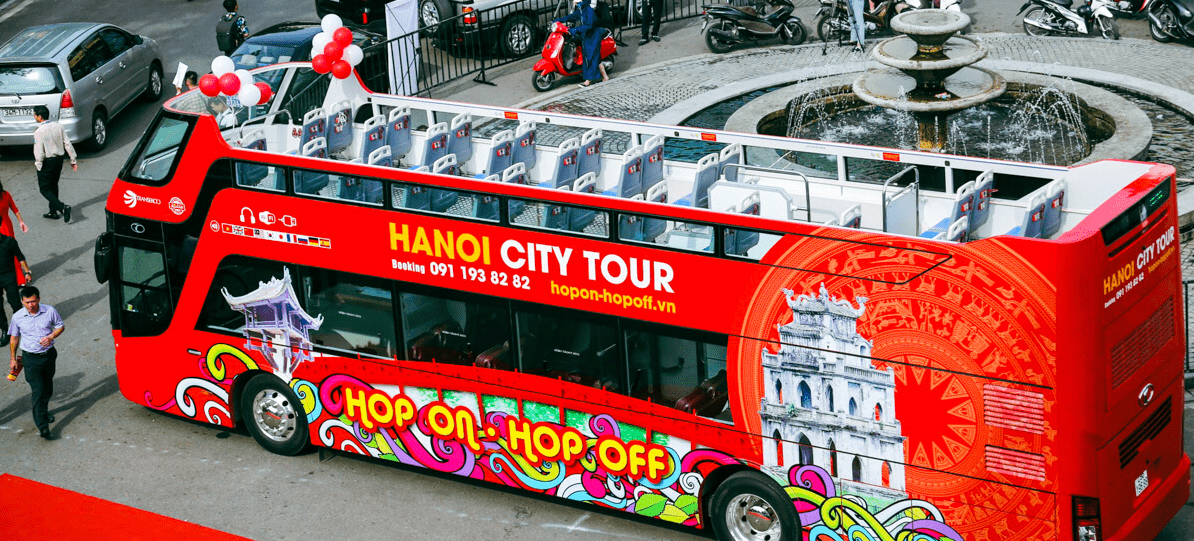
The driver will take you anywhere in Hanoi, not just One Pillar Pagoda. They can take you to specialty eateries and interesting places and always serve you the best.
Get To One Pillar Pagoda By Taxi
Taxi is also a good choice because most of them are indigenous people, so they are familiar with the road here. But the cost is also relatively high, so you should ask before you start moving. With a big city but Hanoi, many taxi companies, such as Mai Linh, Thanh Cong, Ba Sao, and many others.

Using Motorcycles To Get To One Pillar Pagoda
The streets in Hanoi are not as large as those in Saigon and have many people on the road. So a vehicle with high flexibility, like a motorbike, will be very convenient to move. You can ask to rent a motorbike at the hotel or homestay you are staying at. Most of them have car rental services.

Architectural features of One Pillar Pagoda
The Exterior
Lien Hoa Dai, or One Pillar Pagoda today, is the reconstructed version in 1955. The person who carried out this project is the architect Nguyen Ba Lang. He based on the design left behind by the Nguyen Dynasty to recover the pagoda.

This temple has a unique architecture that you cannot be found anywhere in Vietnam. The overall temple is a system of wooden bars combined into a square block, built on a large stone pillar, like a lotus in the middle of Linh Chieu Lake. The lake wall is also made of glazed ceramics to embellish the beautiful picture.
They used red tiles to cover the pagoda’s roof, with four roof corners curved upwards. Prominent on the pagoda’s roof is “Song Long Chau Nguyet,” an image that brings harmony to the universe and protects the temple’s sacredness. It is a delicate combination of architecture, painting, and stone sculpture.
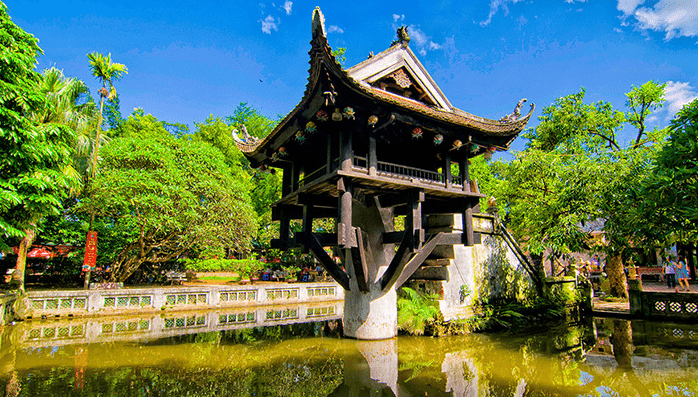
On the campus of One Pillar Pagoda, there are also three gates, with a horizontal painting carved with three words “Dien Huu Tu” work started with the old Dien Huu Pagoda complex and was destroyed but rebuilt. Recently, the government expanded the One Pillar Pagoda. The reason is to create a place for monks, nuns, and Buddhists’ religious activities and welcome tourists.
The Interior
To get to the main hall of Lien Hoa Dai, you will step through 13 steps with a width of about 1.4m. These steps were built long ago and still retain the architecture from the Ly Dynasty.
Lien Hoa Dai is a place used to worship Avalokitesvara Bodhisattva. The large altar is in the main hall, with a yellow Buddha statue on a wooden lotus, surrounded by worshiping objects.
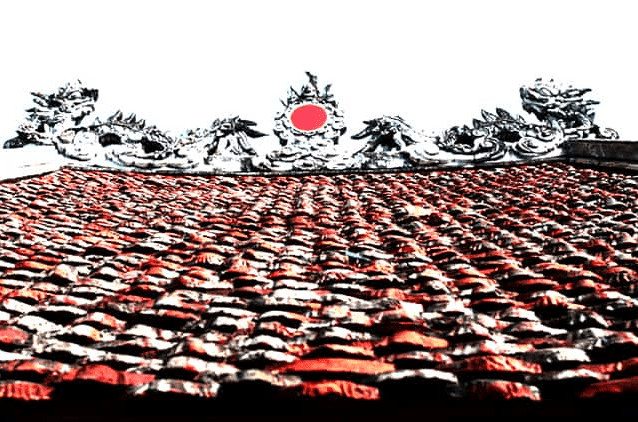
Another particular highlight of One Pillar Pagoda is the luxuriant Bodhi tree brought from the cradle of Buddhism – India. This is a gift from Indian President Rajendra Prasad on the occasion of President Ho Chi Minh’s 1958 visit to India.
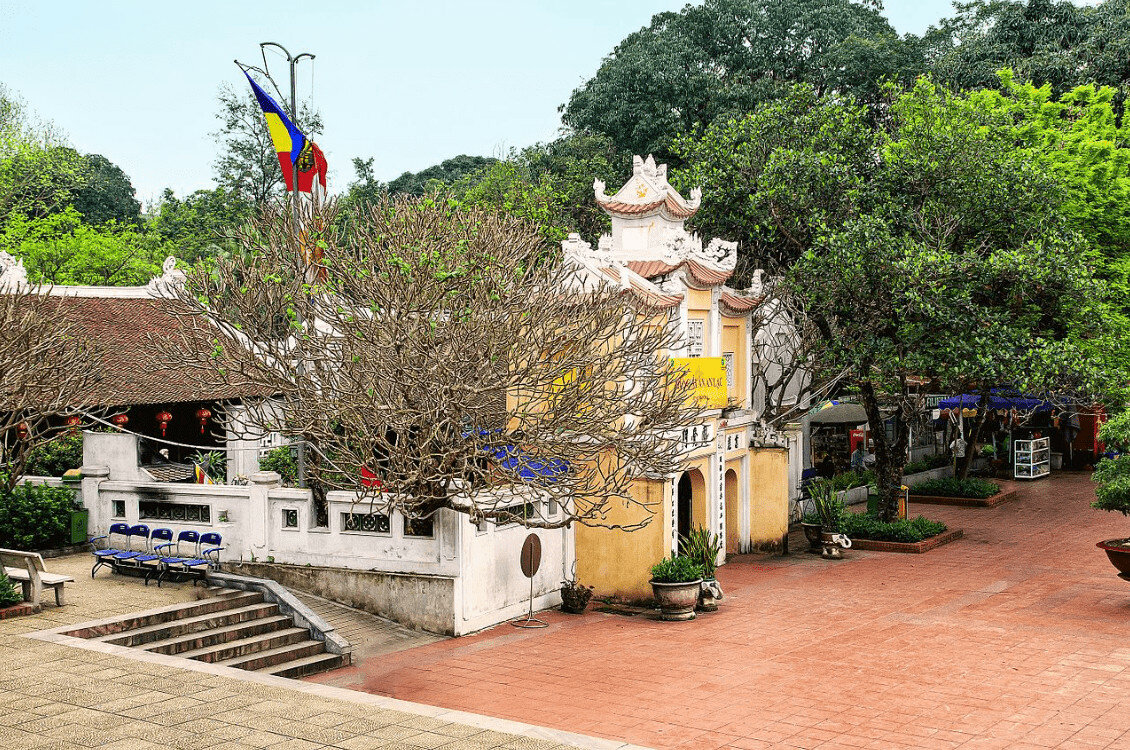
The Pagoda Values
Over thousands of years, the One Pillar Pagoda has become one of Vietnamese’s most famous and mentioned pagodas.
One Pillar Pagoda was one of the first works recognized as a “national historical and cultural relic” in 1962.
In 2006, The Vietnam Record Organization established One Pillar Pagoda as a “Vietnam Record”.
In 2012, One Pillar Pagoda was honored to be recognized by the Asian Record Organization as “The temple with the unique architecture in Asia”. Once again, affirming the unique and unique values of this architectural work. And create more opportunities for tourism development in the Hanoi capital.
Attractions Near One Pillar Pagoda
Ho Chi Minh Mausoleum Complex
Located right on the right side of the temple is Ba Dinh Square – the largest in Vietnam. You only need to walk a short distance to reach Ho Chi Minh Mausoleum and visit the great President Ho Chi Minh.

In addition, One Pillar Pagoda is also very close to other places in Ho Chi Minh Complex, such as Minh’s Stilt House and Ho Chi Minh Museum. You can also rent a car to take you there and learn more about Vietnamese Uncle Ho.
Temple of Literature
Only about 1.4km from One Pillar Pagoda, you will reach the Temple of Literature – the first University of Vietnam. It was Built in 1070 by King Ly Thanh Tong. In 1076, Ly Nhan Tong took the stance that Quoc Tu Giam was next to the Temple of Literature, considered the first university in Vietnam.
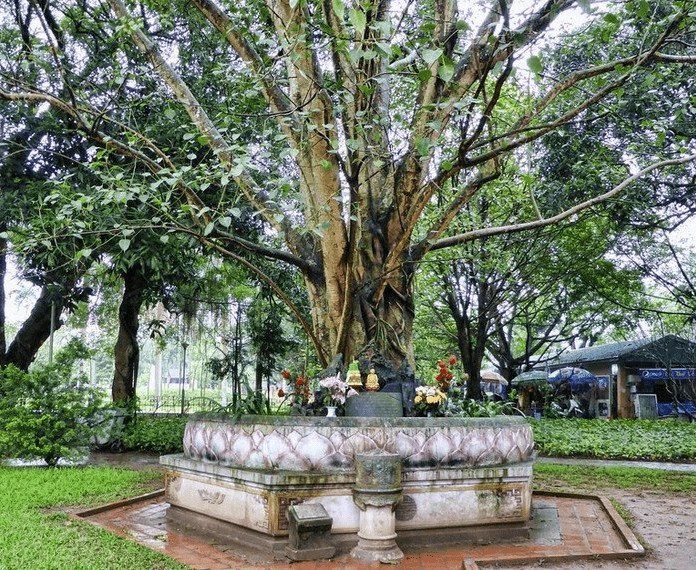
Imperial Citadel of Thang Long
Thang Long Citadel is a massive architectural work built by kings in many historical periods. It is becoming one of the most important monuments in the system of monuments in Vietnam.
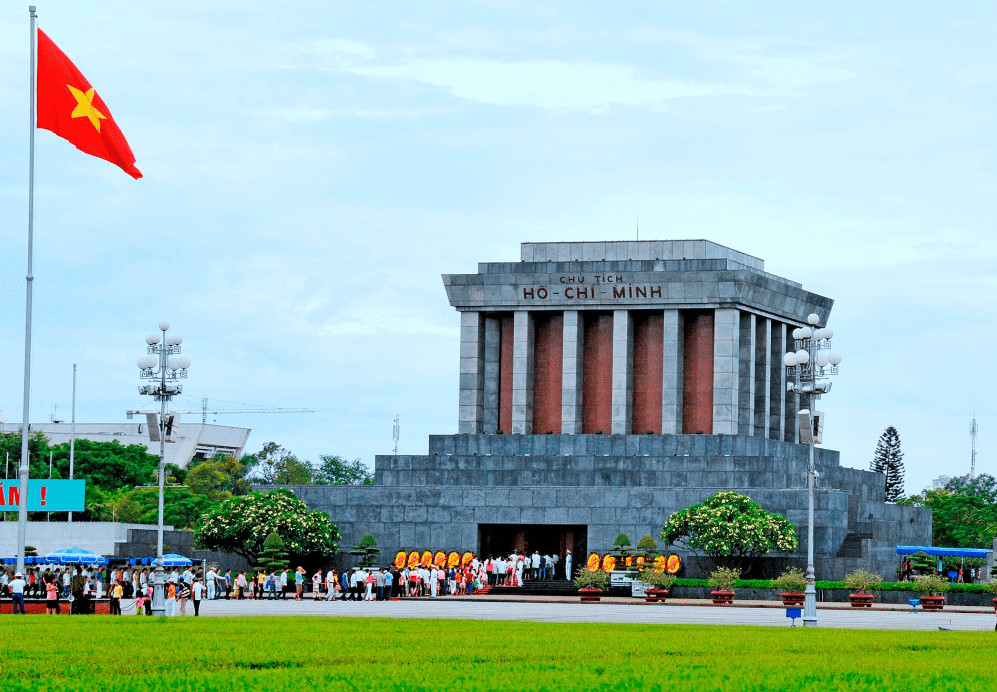
That is all the information about One Pillar Pagoda that Culture Pham Travel wants to send you. We hope this information will be helpful in your research and exploration of Hanoi. You can read more about Tran Quoc Pagoda if you need to know about it.
Conclusion: So above is the One Pillar Pagoda – The Symbol Of Hanoi article. Hopefully with this article you can help you in life, always follow and read our good articles on the website: natuts.com